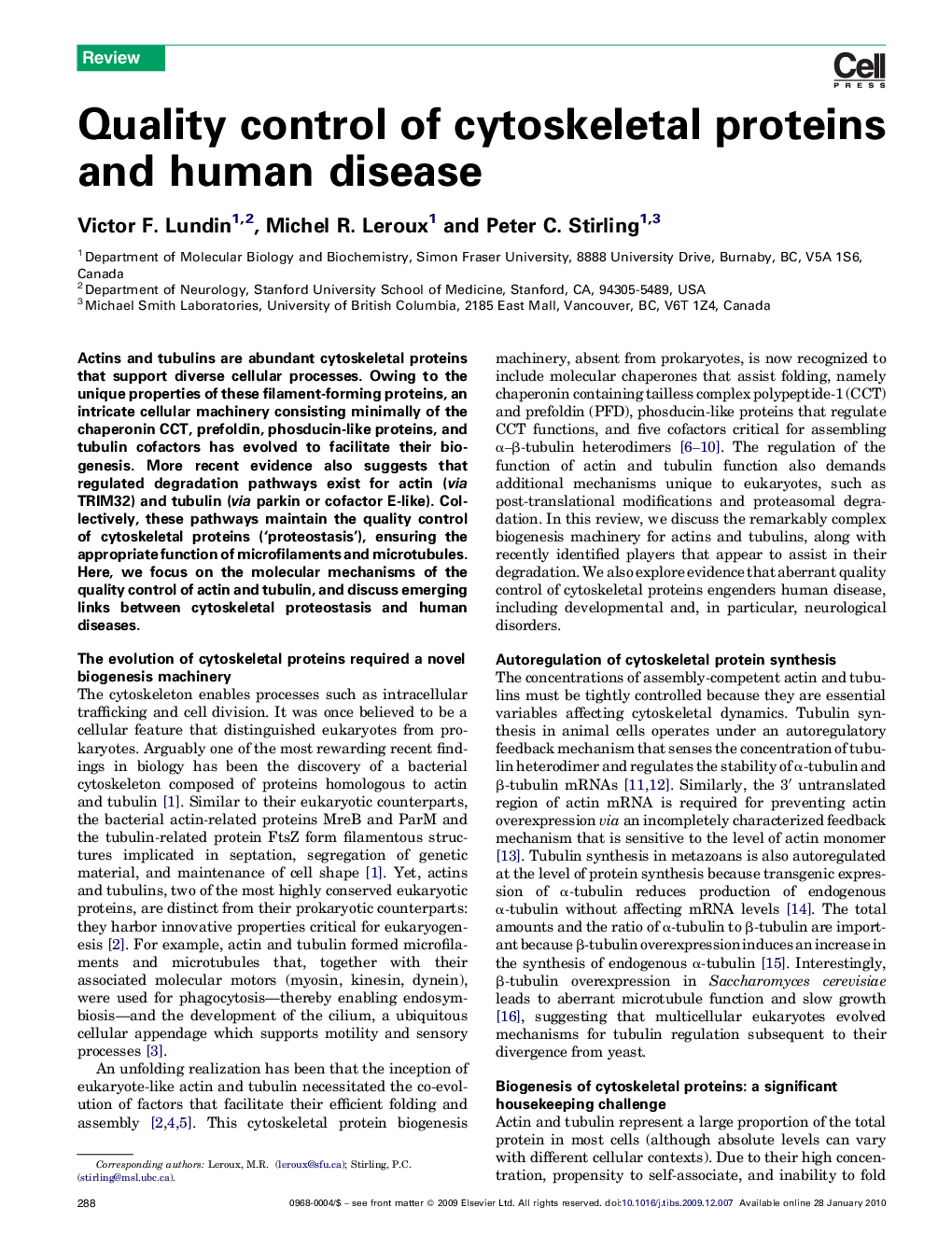| Article ID | Journal | Published Year | Pages | File Type |
|---|---|---|---|---|
| 2031009 | Trends in Biochemical Sciences | 2010 | 10 Pages |
Actins and tubulins are abundant cytoskeletal proteins that support diverse cellular processes. Owing to the unique properties of these filament-forming proteins, an intricate cellular machinery consisting minimally of the chaperonin CCT, prefoldin, phosducin-like proteins, and tubulin cofactors has evolved to facilitate their biogenesis. More recent evidence also suggests that regulated degradation pathways exist for actin (via TRIM32) and tubulin (via parkin or cofactor E-like). Collectively, these pathways maintain the quality control of cytoskeletal proteins (‘proteostasis’), ensuring the appropriate function of microfilaments and microtubules. Here, we focus on the molecular mechanisms of the quality control of actin and tubulin, and discuss emerging links between cytoskeletal proteostasis and human diseases.
